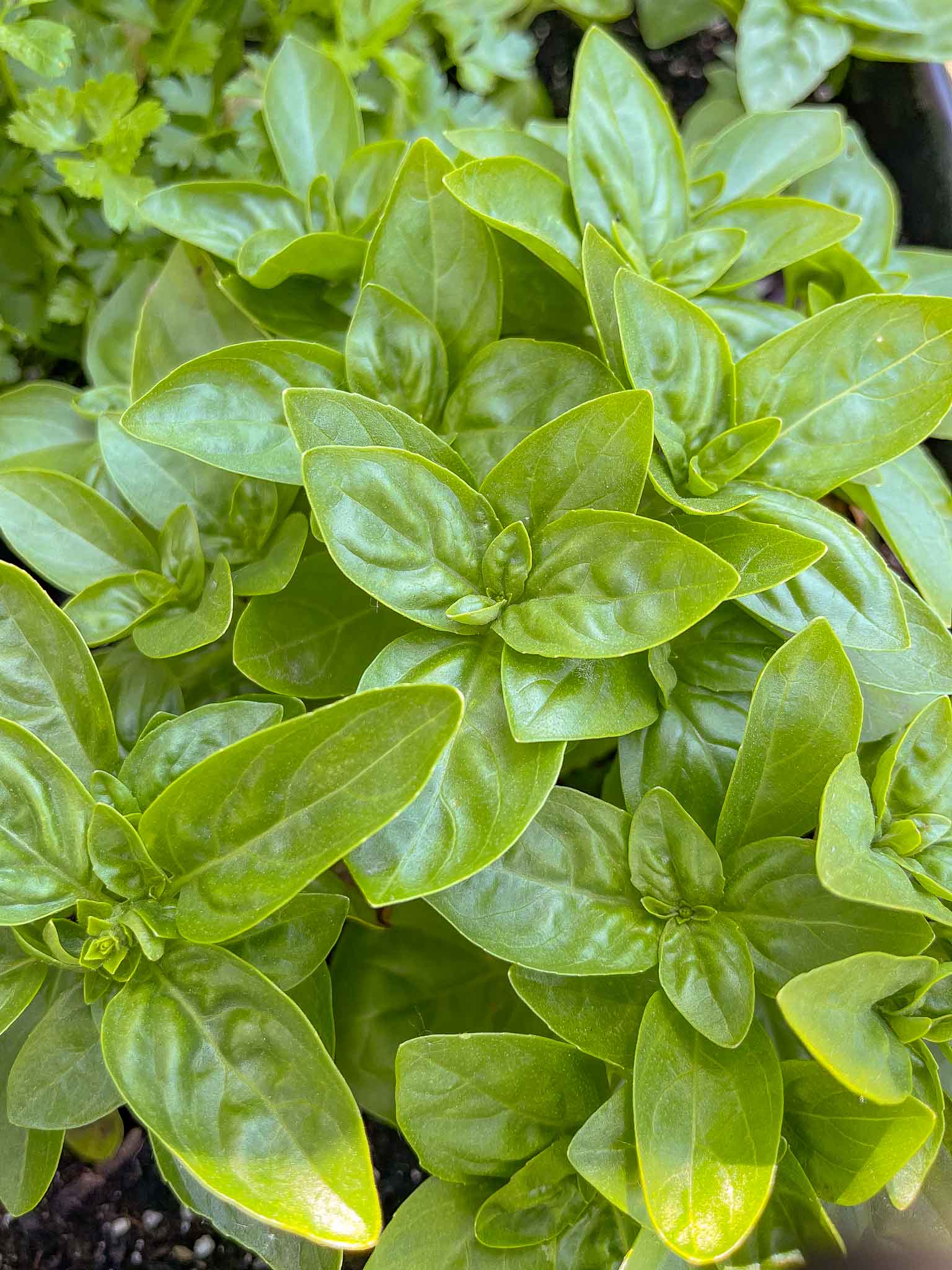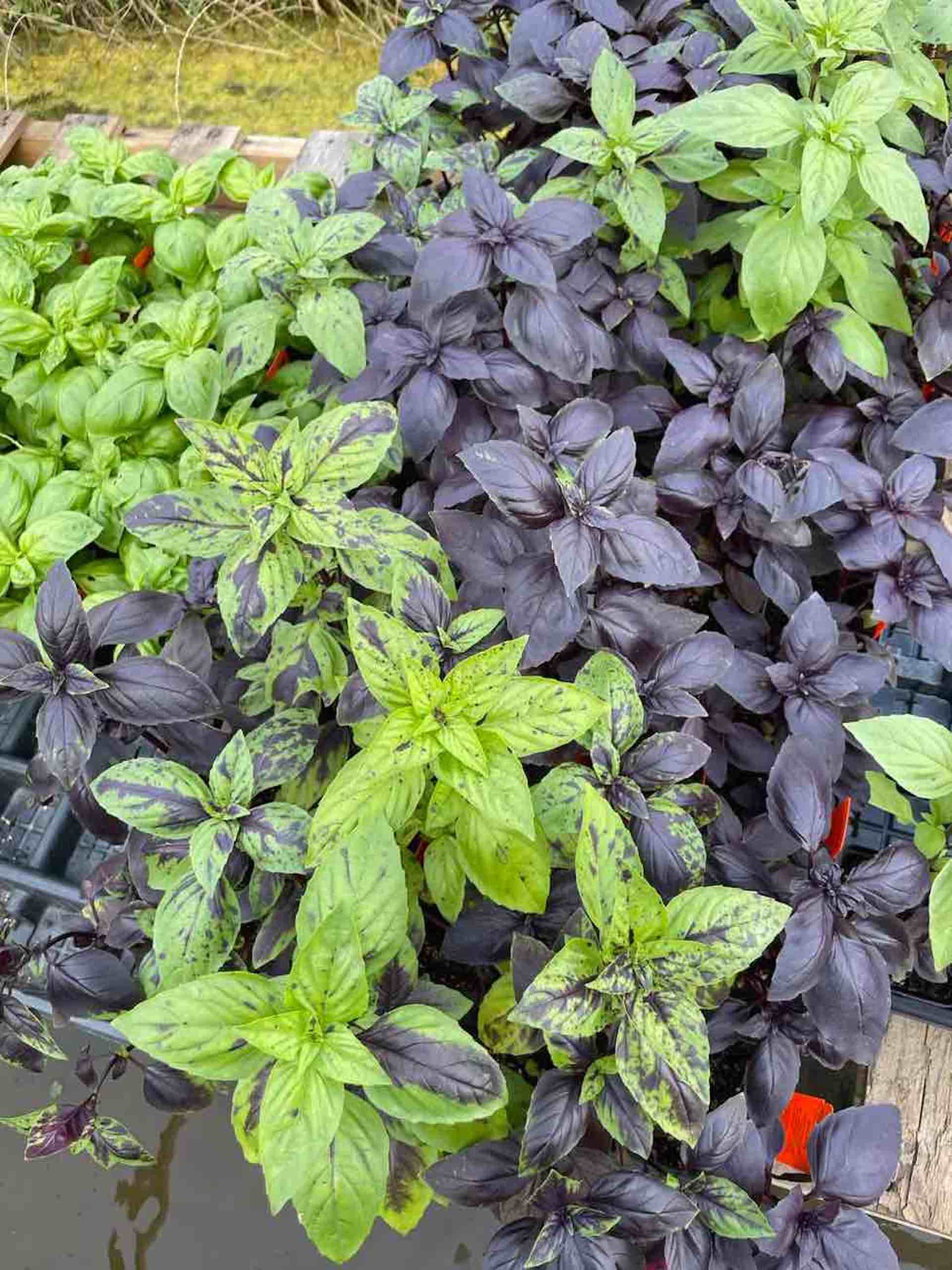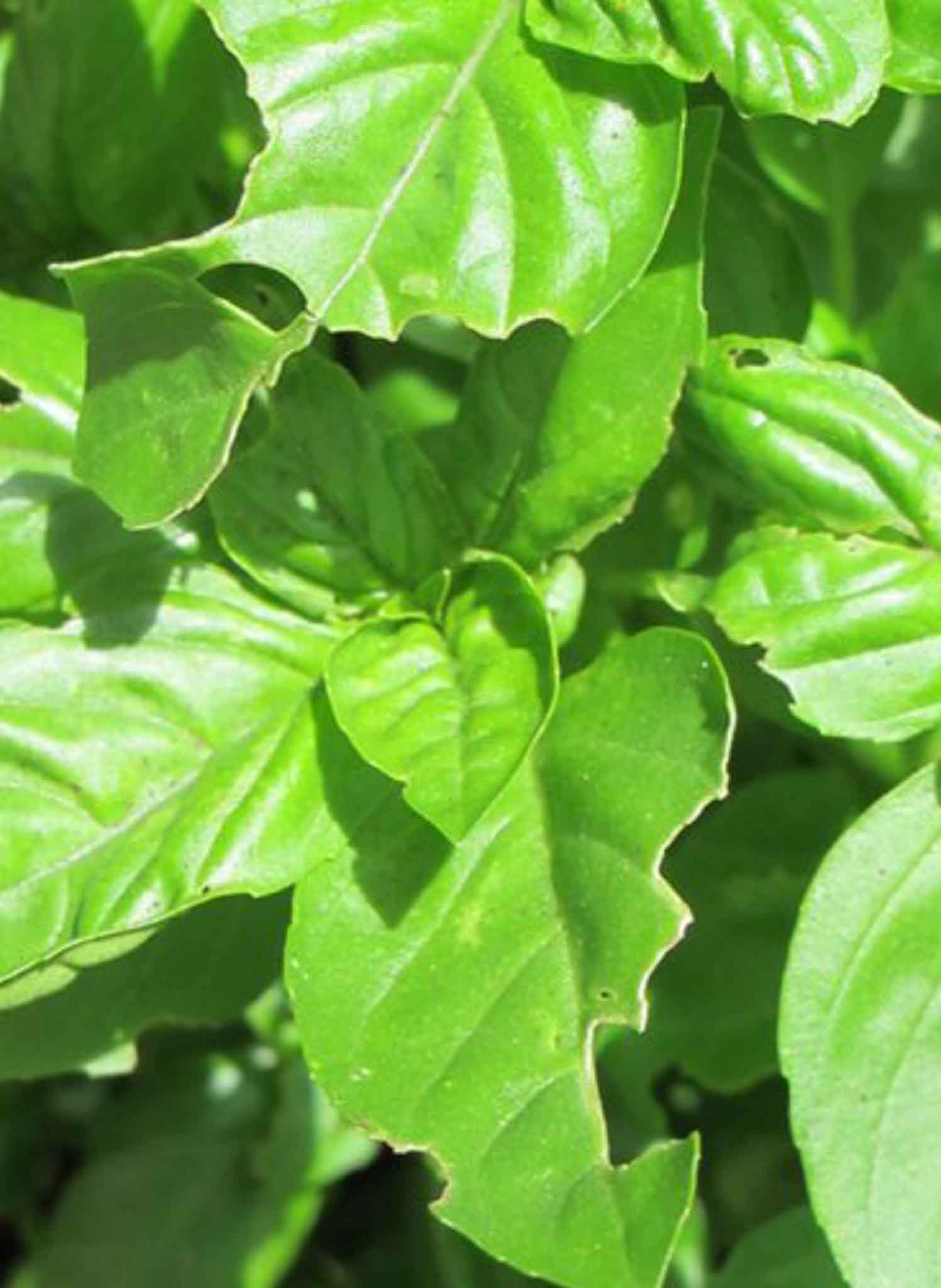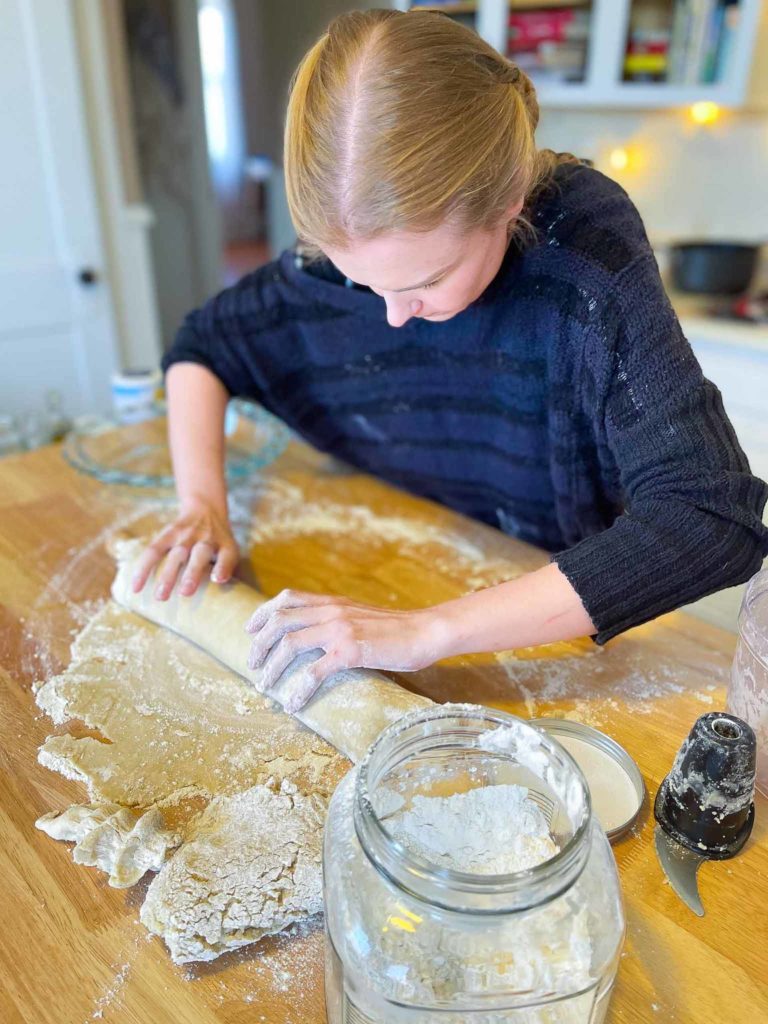HOW TO GROW AND PREPARE BASIL
Basil is the namesake of this blog, so I guess it’s obvious how much we love it! This easy-to-grow herb finds its way into many of our summer dishes and is a delight to grow!
![]()

Walk into my kitchen garden, and you’ll catch the smell of sweet, fresh basil. I love everything about basil! Basil has a robust and sweet aroma that combines herbal notes with a subtle hint of citrus. The intensity of its fragrance can vary, ranging from mild to highly potent, depending on the specific variety of basil. Basil finds its way into many of my Summer dishes.
Are you a fan of fresh, aromatic herbs that enhance the flavor of your favorite dishes? Look no further than basil—the versatile, flavorful herb that’s easy to grow right in your own backyard or indoor herb garden. Whether you’re a seasoned gardener or a beginner, this comprehensive guide will walk you through the step-by-step process of growing basil successfully. From choosing the right variety to nurturing the plants, we’ll cover all the essential aspects of basil cultivation. Get ready to enjoy a bountiful supply of this beloved herb throughout the year!
You can see my Spring garden layout (including basil), seed choices, and each planting here in the Garden to Table section.

Reasons You’ll Love Growing Basil
Here are a few – we use fresh basil on our Half & Half Artisan Pizza Recipe! (above)
-
- Aromatic Delight – Basil is known for its delightful aroma that fills the air with a sweet and herbaceous scent. Whether you’re tending to your garden or simply walking by, the fragrance of basil can uplift your mood and create a pleasant atmosphere.
- Culinary Versatility – Basil is an incredibly versatile herb that can elevate the flavors of numerous dishes. From classic Italian recipes like Caprese salad and Margherita pizza to Thai curries and pesto sauces, basil adds a fresh and distinct taste to various cuisines. Access to your homegrown basil ensures a constant supply of this flavorful herb for your culinary creations.
- Easy to Grow – Basil is a beginner-friendly herb that requires minimal effort to cultivate successfully. It’s relatively quick to germinate and grow, making it an excellent choice for novice gardeners or those with limited gardening space. Whether you have a garden bed, container, or sunny windowsill, basil can thrive in various settings.
- Abundant Harvest – Basil plants have a prolific growth habit, providing a generous harvest throughout the growing season. By practicing regular pruning and harvesting, you can encourage continuous leaf production and enjoy abundant fresh basil leaves for cooking, garnishing, or preserving.
- Decorative and Ornamental – Basil plants possess an aesthetic appeal with their lush green foliage and vibrant purple leaves in the case of purple basil varieties. They can serve as ornamental plants, adding beauty to your garden or indoor spaces. Incorporating basil into your garden design can create visually appealing arrangements and enhance the overall ambiance.
- Health Benefits – Beyond its culinary uses, basil also offers several health benefits. It contains essential nutrients, antioxidants, and anti-inflammatory properties, contributing to well-being. Basil is believed to aid digestion, support the immune system, and promote cardiovascular health, making it a valuable addition to a balanced diet.
- Educational Experience – Growing basil provides an excellent opportunity for learning and exploration. It allows you to observe the growth stages of plants, learn about their specific needs, and develop essential gardening skills. If you have children, involving them in the process can be fun and educational, teaching them about nature, responsibility, and the importance of sustainable food sources.
Growing basil in your garden has many advantages, from the aromatic pleasure it brings to the wide range of culinary possibilities it unlocks. Whether you’re a seasoned gardener or a beginner, cultivating basil is a gratifying experience that combines practicality, aesthetics, and flavor. So, roll up your sleeves, dig into the soil, and embark on a journey of basil cultivation that will reward you with a bountiful harvest and a deeper connection to nature’s gifts.

Popular Varieties of Basil
Here are some easy-to-grow varieties of basil.
-
- Sweet Basil (Ocimum basilicum) – The most common variety, known for its large, green leaves and delightful aroma. It’s perfect for traditional Italian dishes, pesto, and fresh salads.
- Thai Basil (Ocimum basilicum var. thyrsiflora) – This variety boasts a unique flavor profile with hints of anise and licorice. It complements well with Thai, Vietnamese, and other Southeast Asian cuisines.
- Lemon Basil (Ocimum citriodorum) – As the name suggests, this basil variety offers a refreshing lemony scent and taste. It pairs excellently with seafood, poultry, and fruit salads.
- Purple Basil (Ocimum basilicum var. purpurascens) – With its vibrant purple leaves, this basil adds a splash of color to your garden. It’s an excellent choice for garnishing, infused oils, or as a decorative element in dishes.
I’ve experimented with growing these varieties of basil in my kitchen garden. However, sweet basil is one I go back to every year without fail!

How to Grow Basil
Basil is easy and fun to grow. You can grow it inside, outside, in a container, or in your garden.
-
- Outdoor Gardening – Find a spot in your garden that receives at least six to eight hours of direct sunlight daily. Ensure the soil is well-draining and enriched with organic matter. Amend the soil with compost or aged manure to improve its fertility and structure.
- Indoor Gardening – If you’re growing basil indoors, select a location near a south-facing window with ample sunlight. Alternatively, you can use artificial grow lights to supplement the light requirements. Use well-draining potting soil that contains perlite or vermiculite for optimal root development.
- Sowing Seeds – If starting from seeds, sow them indoors 6-8 weeks before the last frost date. Plant the seeds 1/4 inch deep in small containers or seed trays filled with seed-starting mix. Maintain consistent moisture and warmth (around 70°F) until the seedlings emerge.
- Transplanting Seedlings – Once the danger of frost has passed and the seedlings have developed their first set of true leaves, transplant them outdoors or into larger pots. Space the plants 12-18 inches apart to allow proper air circulation.
- Watering – Basil plants require regular watering to keep the soil moist but not waterlogged. Water the plants deeply, especially during dry periods, and avoid wetting the foliage to prevent disease.
- Fertilizing – Feed your basil plants every 4-6 weeks with a balanced organic fertilizer. Alternatively, you can use a slow-release granular fertilizer following the package instructions. Avoid excessive nitrogen fertilizers, as they promote leafy growth at the expense of flavor.
- Pruning and Harvesting – Regularly pinch off the basil stem tips to encourage bushier growth. Harvest the leaves by snipping them just above a leaf node. This promotes continuous leaf production throughout the growing season. Avoid removing more than one-third of the plant at a time to maintain its vitality.
Growing basil is a relatively straightforward process that can be enjoyed by gardeners of all experience levels. To start, select a suitable location for your basil plants that receives at least six to eight hours of direct sunlight each day. Ensure the soil is well-draining and fertile, either by amending it with compost or using a quality potting mix for container gardening. Sow basil seeds or transplant seedlings, ensuring proper spacing between plants to allow for adequate air circulation. Water the plants consistently, keeping the soil moist but not waterlogged. Regularly pinch off the basil stem tips to promote bushier growth, and harvest the leaves by snipping them just above a leaf node. You can enjoy a bountiful supply of fresh basil for culinary delights throughout the growing season with proper care and attention.

Basil Pests and Bugs
Basil can be susceptible to certain pests and bugs.
-
- Aphids – These small, soft-bodied insects cluster on the undersides of leaves, sucking sap from the plant. They can be controlled by spraying the affected basil leaves with a strong stream of water or by applying insecticidal soap or neem oil.
- Whiteflies –These tiny, winged insects congregate on the undersides of leaves and leave behind a sticky residue called honeydew. Regularly inspect your basil plants and use yellow sticky traps or insecticidal soap to manage whitefly populations.
- Spider Mites – These minuscule pests are not actual insects but rather arachnids. They feed on the sap of basil plants, causing yellowing, speckled leaves, and fine webbing. Increase humidity around the plants by misting them regularly and using insecticidal soap or neem oil to control spider mites.
- Slugs and Snails – These nocturnal pests feed on basil leaves, leaving large, irregular holes behind. Reduce their presence by manually removing them from the garden or using organic slug and snail baits.
- Basil Downy Mildew This is a fungal disease that affects basil plants, causing yellowing leaves, leaf drops, and a grayish-purple fuzz on the undersides of leaves. Prevent downy mildew by providing good air circulation, avoiding overhead watering, and planting resistant basil varieties.
- Fusarium Wilt: This soilborne fungal disease can cause wilting, yellowing, and stunted growth in basil plants. Unfortunately, there is no cure for Fusarium wilt once a plant is infected. To prevent it, ensure good soil drainage and avoid overwatering.
- Regularly inspect your basil plants for any signs of pests or diseases. Preventive measures such as proper watering, good airflow, and overall plant health can help minimize pest and disease issues. If an infestation worsens, consider using organic pest control methods or consult a local gardening expert for further assistance.
Regularly inspect your basil plants for any signs of pests or diseases. Taking preventive measures such as proper watering, providing good airflow, and maintaining overall plant health can help minimize pest and disease issues. If an infestation becomes severe, consider using organic pest control methods or consult with a local gardening expert for further assistance.

How to Prepare Fresh Basil
Preparing basil is quite easy!
-
- Rinse the basil under cold water – This will remove any dirt or debris from the peas.
- Pinch the leaves – Remove the leaves from the stems by pinching or cutting them just above the leaf node
- Chop, tear, or whole? Depending on the dish you can either chop your fresh basil or use it whole. I prefer the whole leaves that are small and easy to eat. If the leaves are large, I will chop!
Basil is best eaten when it is fresh and at its peak flavor. The flavor and aroma of basil are most vibrant when the leaves are freshly harvested. Ideally, basil should be consumed shortly after picking to fully savor its aromatic qualities.
When using basil in recipes, it is recommended to add it towards the end of the cooking process or as a garnish. This helps preserve its delicate flavors and prevents it from becoming overly wilted or losing its vibrant color.

How to Prepare Dried Basil
Drying basil is a popular method to preserve its flavor and extend its shelf life.
-
- Harvesting – Choose healthy basil plants with mature leaves. Harvest the basil in the morning when the essential oils are most concentrated.
- Cleaning – Gently wash the basil leaves with cool water to remove dirt or debris. Pat them dry with a clean towel or allow them to air dry.
- Bundling – Gather a small number of basil stems, around 5-10 stems, and secure them with a rubber band or a piece of string. Make sure the stems are aligned at the base.
- Hanging – Hang the basil bundles upside down in a cool, dry, and well-ventilated area. Avoid direct sunlight, which can cause the basil to lose its flavor and color. Allow sufficient air circulation around the bundles to promote drying.
- Drying Process – Leave the basil bundles to dry for approximately 1 to 2 weeks. The drying time may vary depending on environmental conditions, but the basil leaves should become dry, crisp, and brittle to the touch when thoroughly dried.
- Removing Leaves – Once the basil leaves are completely dry, gently remove them from the stems. You can do this by sliding your fingers down the stems, allowing the leaves to separate naturally. Discard any discolored or damaged leaves.
- Storing – Store the dried basil leaves in airtight containers, such as glass jars or resealable bags, to maintain their freshness and prevent moisture absorption. Store the containers in a cool, dark place, away from heat and humidity.
- Usage – Use the dried basil leaves as a seasoning in soups, stews, sauces, and marinades or as a topping for pizzas and pasta dishes. Crush or crumble the dried leaves before adding them to recipes to release their full flavor.
It’s worth noting that dried basil may not have the same intensity of flavor as fresh basil, but it still adds a pleasant herbal note to dishes. Enjoy the convenience of dried basil throughout the year by following these steps to preserve your homegrown harvest.

Serving Suggestions for Basil
Simple to prepare and wonderfully delicious!
-
- Vegan Basil Pesto – This Vegan Basil Pesto recipe is simple and elegant and is my favorite condiment to keep on hand. There are many variations, which are all good on pasta, sandwiches, or pizza.
- Grain Bowls – Can you say “Delicious”? Grain bowls are a popular and versatile dish that typically combines cooked grains, vegetables, protein, and various toppings. These bowls offer a balanced and nutritious meal option that can be customized to suit any grain bowl’s individual tastes and dietary preferences.
- Cherry Tomato Pasta – This Cherry Tomato Pasta is the perfect summer dinner. It’s filling and delicious and spotlights fresh, in-season cherry tomatoes. It’s full of flavor and bursty tomatoes which everyone is sure to enjoy.
- On Salads – Baby Beet Greens Salad with Romaine and Fresh Garden Veggies. Crisp, crunchy, clean baby beet greens salad with garden-fresh veggies.
So many recipes use fresh basil! A good place to start is with the recipe below for Vegan Basil Pesto. If you decide to give it a try let us know in the comments below.

Vegan Basil Pesto
Equipment
- Food Precessor
Ingredients
- 8 cups Packed fresh basil
- 1/2 cups Pine nuts, toasted
- 2-4 cloves Garlic
- pinch Sea Salt
- 1 cup Extra-virgin Olive Oil
- 1/2 cup Finely grated parmesan cheese (vegan) *optional
Instructions
- Pulse the basil, pine nuts, garlic, and 1/2 tsp sea salt in a food processor or blender until the basil is finely chopped.
- With the machine running, gradually add the olive oil and puree until emulsified. To store, transfer, cover, and refrigerate up to 5 days.


0 Comments